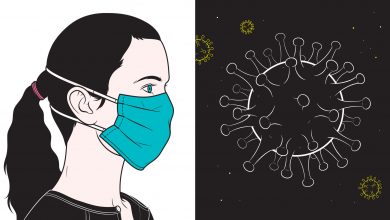What Is Lactose Intolerance? Tips For Lactose Intolerance

What are the symptoms of lactose intolerance in adults? If you like milk, but you experience problems such as abdominal pain, bloating, cramps after drinking, you are probably experiencing lactose intolerance. Many people who are experiencing this problem are looking for a way to avoid dairy products that are a source of calcium and vitamins. However, it creates a serious calcium deficiency problem. In this case, problems can occur in the nervous system and immune system, especially in the bones and teeth.
Approximately 65% of the world has more lactose intolerance as they get older. Lactose intolerance is a treatable problem. In this article, we will give you some information about natural treatments and some great tips for lactose intolerance.
What Is Lactose Intolerance?
Lactose intolerance is the inability to digest lactose that is found in milk and dairy products. Lactose intolerance is due in part to the lack of lactase, an enzyme produced by cells forming the small intestine. Lactase breaks down lactose in the digestive tract, and without lactase, lactose from dairy products cannot be digested. In some people, sufficient lactase enzymes to dissolve the consumed lactose may not be secreted. It may result in lactose intolerance.
Symptoms Of Lactose Intolerance
- Abdominal cramps
- Bloating
- Stomach Gas
- Diarrhea
- Nausea
- Frequent urination
- Vomiting
- Constipation
- Lower abdominal pain
Types and Causes Of Lactose Intolerance
Lactose intolerance is divided into two types depending on the causes.
- Primary Lactose intolerance: It is the most common type and is caused by a decrease in lactase production in the body.
- Secondary Lactose intolerance: This type is quite rare. It can be caused by a particular stomach parasite or more serious diseases such as Celiac.
Many people are not aware of lactose intolerance until they have a lactose test. Three tests are usually used for the diagnosis of lactose intolerance: Lactose Tolerance Test, Hydrogen Respiration Test, and Stool Acidity Test. These tests help to determine if you are suffering from lactose intolerance or if you are allergic to dairy products.
Natural Remedies And Tips For Lactose Intolerance
Determine your lactose intolerance level: First, to determine your level of lactose intolerance, you need to leave all lactose-containing foods up to 3-4 weeks to completely free the lactose from your body. Then, start with a small amount of milk or cheese. Monitor your symptoms and try to understand how much tolerance your body can tolerate. Once you know your limits, management becomes a little easier.
Beware of hidden lactose: Although lactose is found in milk and dairy products, it can often be found in many foods that you cannot imagine. To detect it, check labels before purchase. You should also know that bread, cereals, chocolates, soups, puddings, salad dressings, ready-made cocoa mixes, candies, frozen dishes, pastry-cookie mixes and ready-made foods such as sausage, salami may contain lactose. Although the amounts of lactose are small, those with low tolerance levels may experience symptoms due to these foods.
The following foods will allow you to get enough calcium without complications. Besides, individuals with lactose intolerance often lack B12 and vitamin D. Therefore, you should take these vitamins from sources other than dairy products. Below are the foods that can compensate for the lack of milk and dairy products:
- Soy milk
- Egg
- Spinach
- Bean curd
- Salmon and Sardines
- Broccoli
- Sesame
- Leafy Green Vegetables
- Almond
- Cabbage
- Rice
- Apple
Tips for Lactose Intolerance
Some recommendations to alleviate the symptoms of lactose intolerance after milk and dairy products:
#1) Apple Cider Vinegar: You can mix one tablespoon apple cider vinegar in a cup of warm water once a day. Apple cider vinegar neutralizes stomach acid and helps digest milk sugar and relieves symptoms such as gas, bloating, and nausea.
#2) Lemon Juice: Lemon juice has a neutralizing effect on gas, bloating, and nausea. Squeeze half a lemon into a glass of water and add the honey. You can do it every day.
#3) Lemon Oil and Peppermint Oil: Lemon oil helps digestion by neutralizing stomach acid and eliminating digestive problems caused by lactose intolerance. Peppermint oil calms the digestive system and helps digestion, and also relieves complaints such as bloating and gas. You can add two drops of lemon oil or mint oil to a glass of water every day and drink.
5 Amazing Health Benefits Of Pumpkin
Amazing Health Benefits Of Lemon
Living with lactose intolerance does not mean that you cannot drink milk continuously or avoid all milk-based products. With appropriate planning and prevention, many people suffering from lactose intolerance can consume dairy products in a controlled manner. However, you need to consult your doctor for proper planning.





